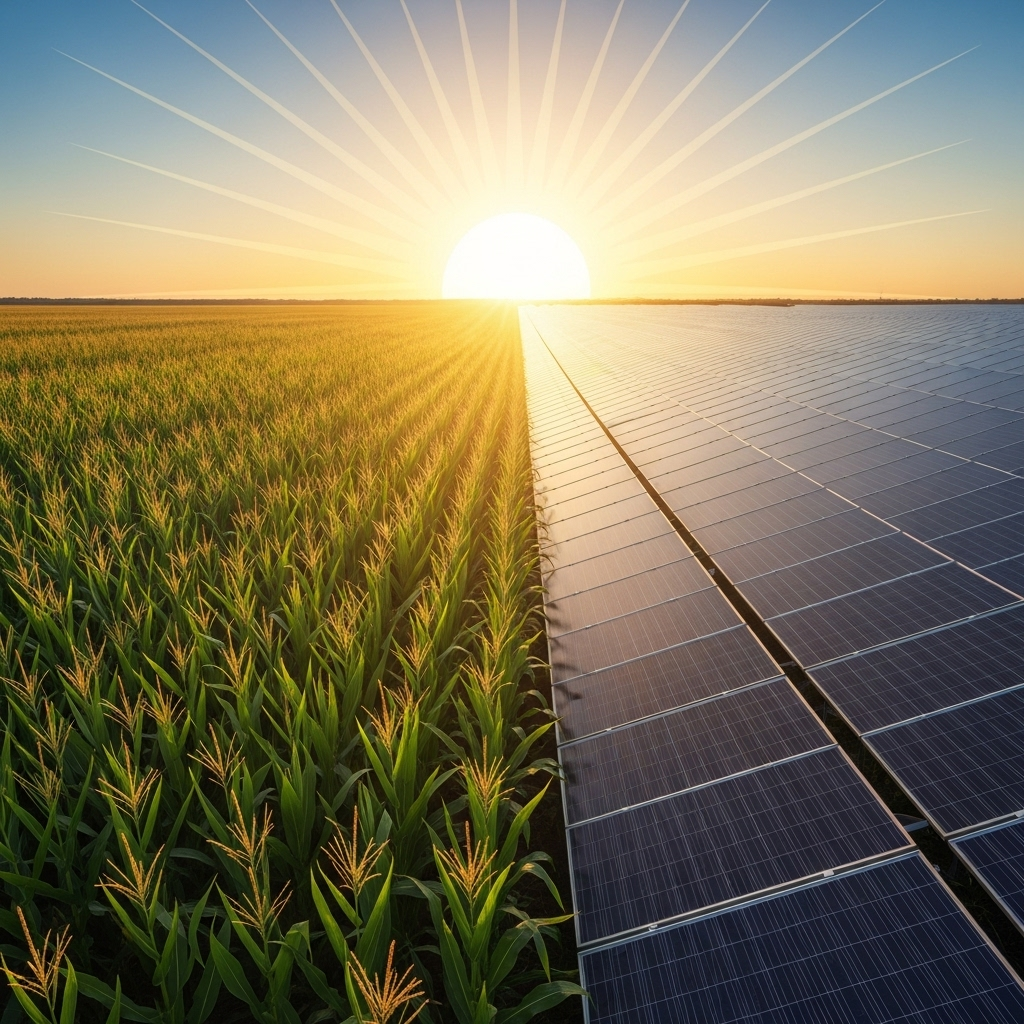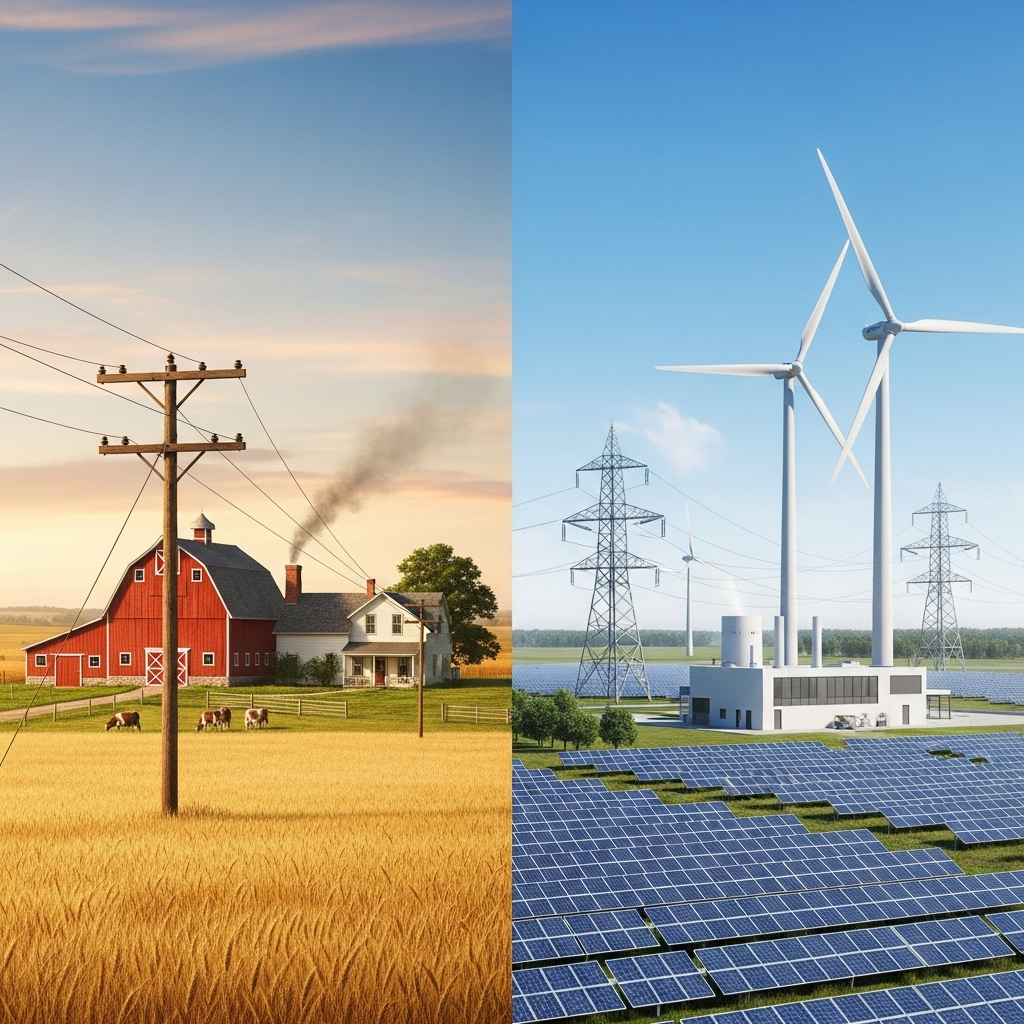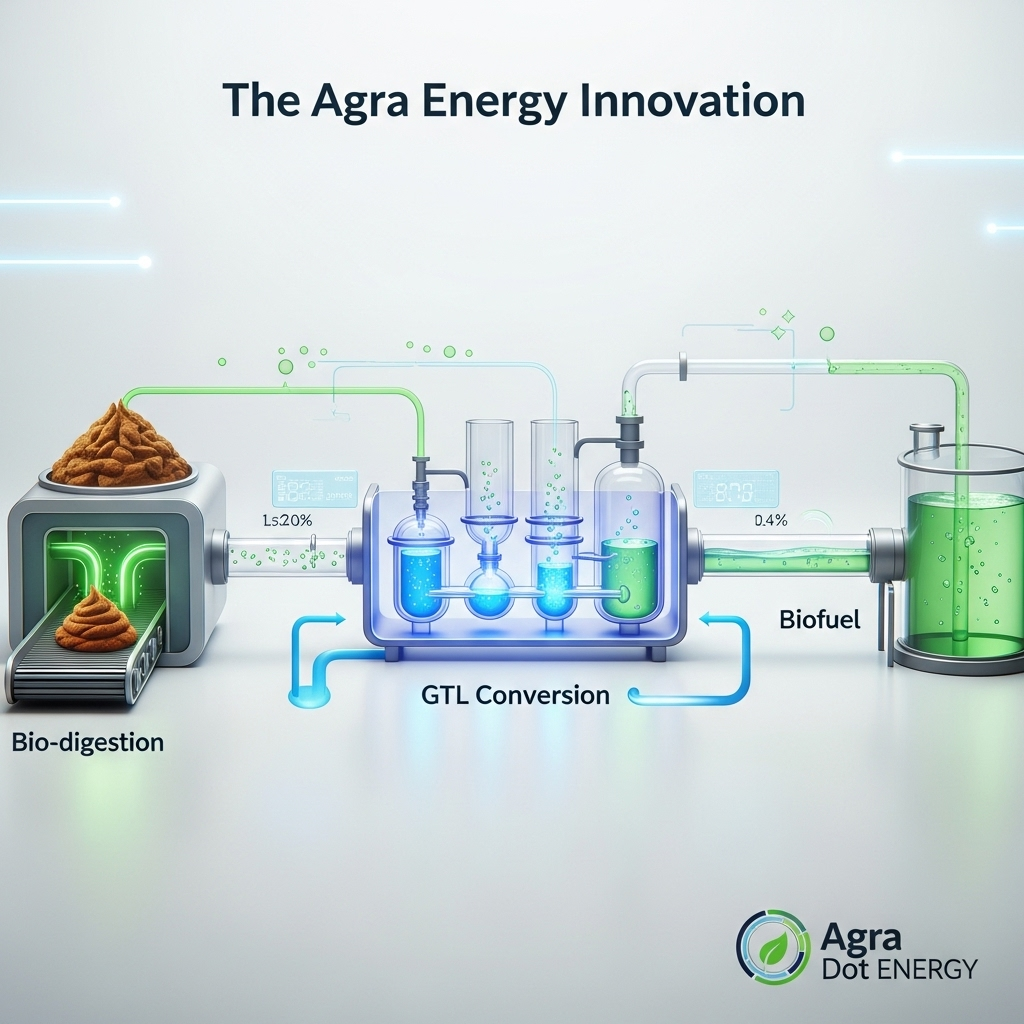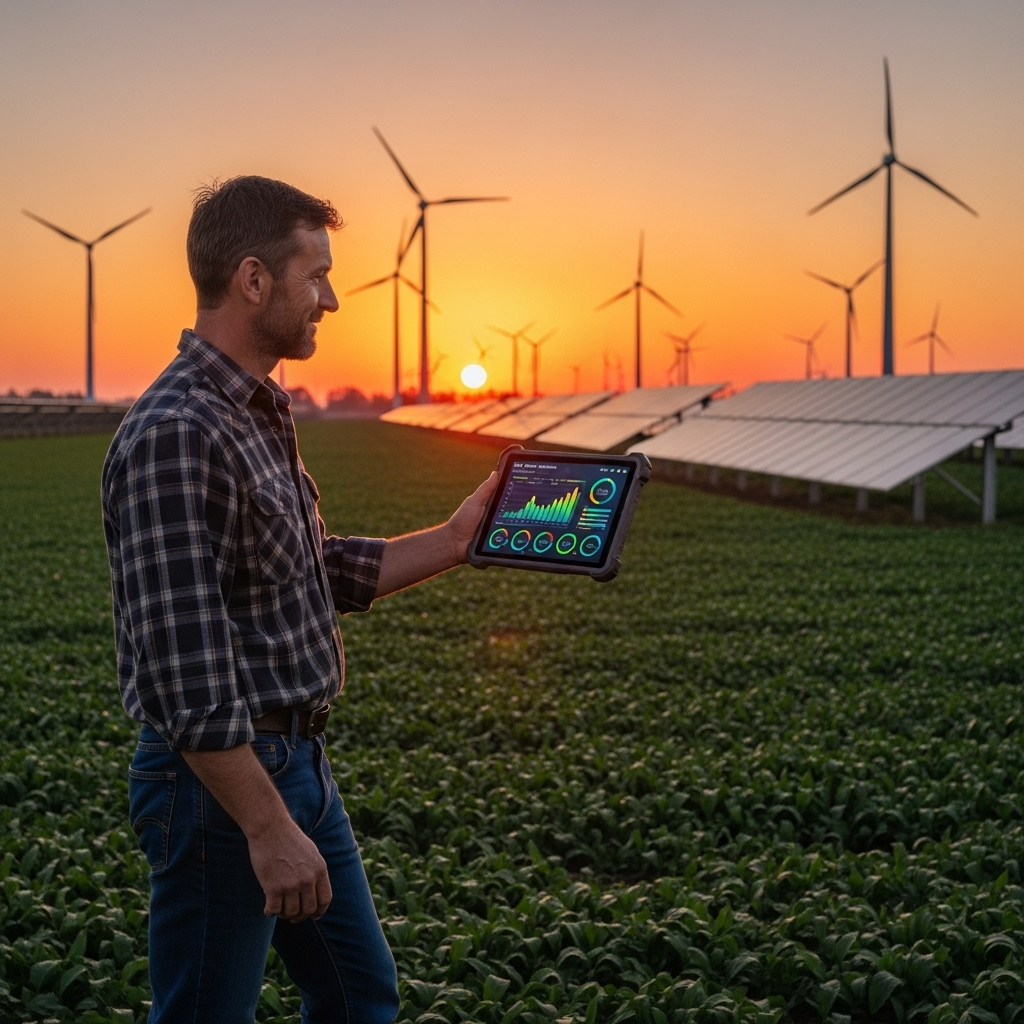
The American heartland, for generations, has been the breadbasket of the world. Fields of gold and green, sprawling as far as the eye can see, have sustained us, nourished us, and formed the very backbone of our nation. But what if we told you that a new kind of harvest is emerging from these same fields? A harvest that doesn’t just feed our bodies, but powers our lives. A harvest of clean, renewable energy.
This isn’t science fiction. This is the reality of the modern farm, a place where traditional agriculture is meeting cutting-edge technology to create a more sustainable and prosperous future for us all. And at the forefront of this revolution is Agra Dot Energy.

From Consumers to Producers: The Shifting Energy Landscape
For decades, the industrial power industry has been a centralized behemoth, with massive power plants churning out electricity that is then transmitted across vast distances to homes, businesses, and, yes, farms.[1] This model, while it has served us well, is undergoing a radical transformation. The urgent need to address climate change, coupled with remarkable advancements in renewable energy technology, is paving the way for a more decentralized, resilient, and environmentally friendly energy grid.

And where do farms fit into this new paradigm? Perfectly.
Farms, which have traditionally been significant consumers of energy, are now poised to become major producers. The very resources that have always been a part of the agricultural landscape – the sun, the wind, the organic byproducts of farming itself – are now being harnessed to generate clean electricity.
Imagine vast solar arrays shimmering alongside rows of corn, their panels soaking up the same sunlight that ripens the crops.[1] Picture towering wind turbines, their blades spinning gracefully in the breeze, generating power while livestock graze peacefully below. And consider the incredible potential of biomass, the organic waste that is a natural part of any farming operation, to be converted into a reliable source of energy.[1]
These aren’t just pipe dreams. All across the country, farmers are embracing these technologies, not just to power their own operations, but to feed clean energy back into the grid, creating new revenue streams and strengthening their local economies.
The Agra Energy Innovation: Turning Waste into a Wonder Fuel
At Agra Dot Energy, we are passionate about unlocking the full energy potential of the American farm. We see a future where every farm is not just a source of food, but a powerhouse of clean energy. And we are pioneering the technology to make that future a reality.
Our focus is on one of the most overlooked but abundant resources on the farm: animal manure. For centuries, manure has been both a valuable fertilizer and a challenging waste product. But what if we could transform this humble substance into a high-value, renewable fuel?
That’s exactly what we’re doing.
In partnership with the brilliant minds at the University of Wisconsin Oshkosh, we have developed a groundbreaking system that converts dairy farm waste into renewable diesel and jet fuel. Our pioneering technology takes the biogas produced from anaerobic digesters – a process that breaks down manure in an oxygen-free environment – and, through a micro gas-to-liquid (GTL) conversion process, transforms it into a clean-burning, high-performance biofuel.
Our first commercial-scale facility, located at Dairyland Farm in New Franken, Wisconsin, is a testament to the power of this technology. This $20 million facility is projected to produce an astounding 750,000 gallons of renewable fuel annually. That’s 750,000 gallons of fuel that will power our trucks, our planes, and our economy, all while reducing our reliance on fossil fuels and creating a cleaner, healthier environment.
A Win-Win-Win for Farmers, Communities, and the Planet
The beauty of our technology lies in its multifaceted benefits. For farmers, it’s a new and reliable source of income. They are no longer just selling milk or crops; they are selling energy. This diversifies their revenue streams and makes their operations more resilient.
For communities, it means cleaner air and a stronger local economy. Our facilities create jobs, and the fuel we produce is a homegrown energy source, reducing our dependence on foreign oil.
And for the planet, it’s a game-changer. By capturing the methane from manure – a potent greenhouse gas – and converting it into fuel, we are dramatically reducing emissions and fighting climate change. It’s a closed-loop system that turns a potential pollutant into a powerful solution.

The Future is Now
The transition to a clean energy economy is not just a dream for the future; it’s happening right now, on the farms of America. And Agra Dot Energy is proud to be leading the charge. We believe that the same ingenuity and hard work that have made our nation a global agricultural leader will now make us a global leader in renewable energy.
The fields of the heartland are yielding a new harvest, a harvest that will power our future, protect our planet, and create a more prosperous and sustainable world for generations to come. And it’s all thanks to the incredible potential of the modern American farm.

Here are 12 detailed image descriptions for your article:
- The New Harvest: A visually striking image of a field with half corn stalks and half solar panels, symbolizing the dual role of modern farms in producing both food and energy. A stylized sun is shining brightly, casting a golden glow over the entire scene.
- From Consumer to Producer: A split-screen image. On one side, a classic, old-fashioned farm with a single power line running to it, representing energy consumption. On the other side, a modern farm with wind turbines, solar panels, and a small, clean-running power facility, with multiple power lines extending out from the farm, symbolizing energy production.
- The Shifting Energy Landscape: A dynamic, slightly futuristic illustration of a decentralized power grid. Glowing lines connect farms, homes, and businesses in a web-like pattern, contrasting with a single, large, fading power plant in the background.
- Harnessing Nature’s Power: A panoramic landscape showcasing multiple renewable energy sources on a farm. A gentle breeze is shown turning wind turbines, the sun is beating down on solar panels, and an inset graphic shows the molecular structure of biomass.
- The Agra Energy Innovation: A clean, high-tech illustration of the gas-to-liquid (GTL) conversion process. It shows a simplified, easy-to-understand diagram of how animal manure enters a system and emerges as clear, green-tinted biofuel. The Agra Dot Energy logo is subtly incorporated.
- Waste to Wonder Fuel: A visually compelling “before and after” image. On the “before” side, a pile of manure. On the “after” side, a gleaming, futuristic fuel nozzle with a single drop of clean, renewable diesel. The transformation is highlighted with a sparkling, magical effect.
- Partnership in Innovation: A professional and collaborative image showing silhouettes of a farmer in overalls shaking hands with a scientist in a lab coat. In the background, a blueprint of the renewable energy facility is visible, with the logos of Agra Dot Energy and the University of Wisconsin Oshkosh displayed prominently.
- Dairyland Farm: A Beacon of Progress: A beautifully rendered image of the Dairyland Farm facility. The facility looks clean, modern, and efficient, nestled harmoniously within the surrounding farmland. A gentle wisp of clean steam is rising from a vent, indicating that the facility is operational.
- Fueling the Future: A powerful image of a semi-truck and an airplane, both subtly branded with the Agra Dot Energy logo, being fueled by the renewable diesel and jet fuel. The background shows a clear blue sky and a thriving green landscape, emphasizing the clean nature of the fuel.
- A Win-Win-Win Scenario: A triptych, a single image divided into three panels. The first panel shows a happy, prosperous farmer. The second shows a thriving, clean community. The third shows a healthy, vibrant planet Earth. The three panels are visually connected, demonstrating the interconnected benefits.
- The Closed-Loop System: An elegant, circular infographic that illustrates the entire process, from cow to fuel. It starts with a cow, then shows manure going into the digester, then the GTL conversion, then the fuel being used, and finally, the clean emissions returning to the atmosphere, creating a complete, sustainable cycle.
- The Future is Now: A bold, forward-looking image. A farmer, standing in a field at sunrise, is holding a tablet that displays real-time data on energy production. In the distance, the silhouettes of wind turbines and solar panels are visible against the rising sun, symbolizing a bright and hopeful future.
Discover more from Agra Dot Energy
Subscribe to get the latest posts sent to your email.

